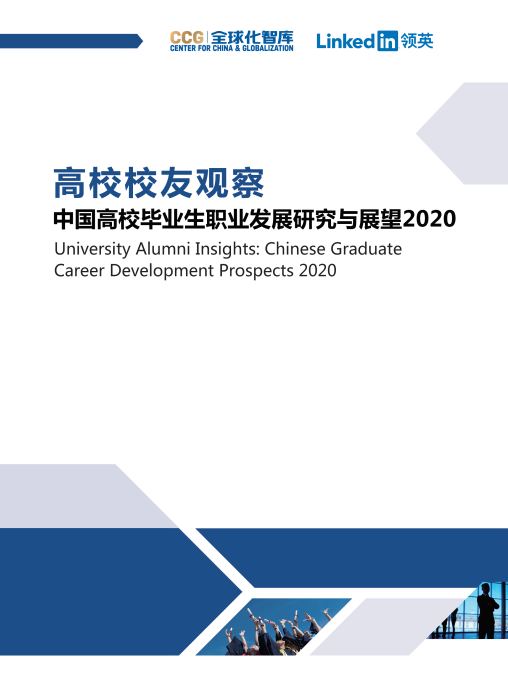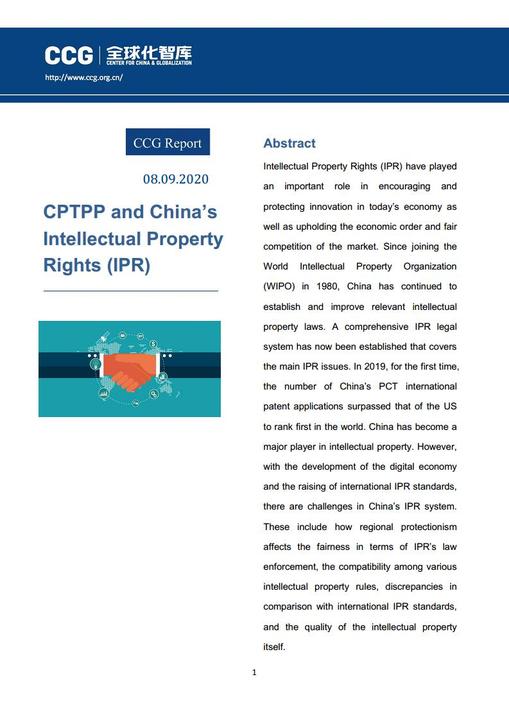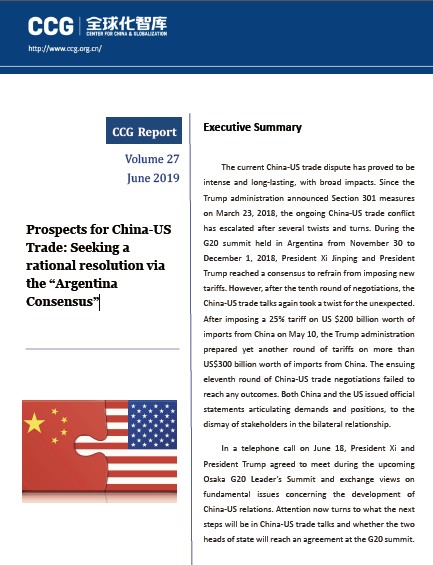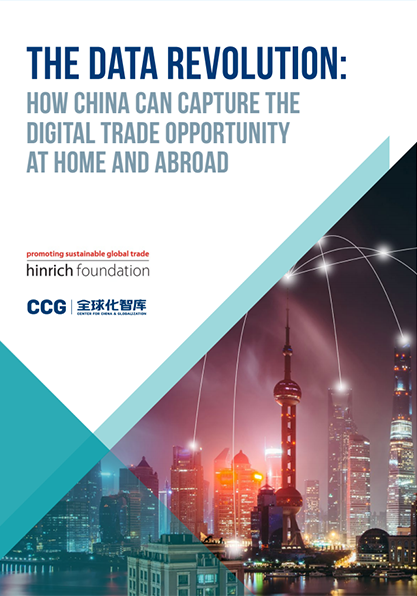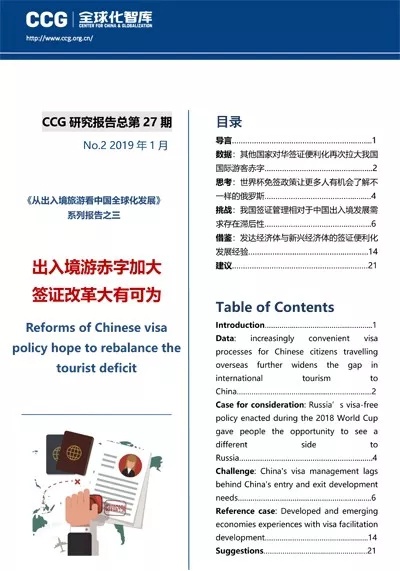The Ukraine Crisis Isn’t the End of Globalization
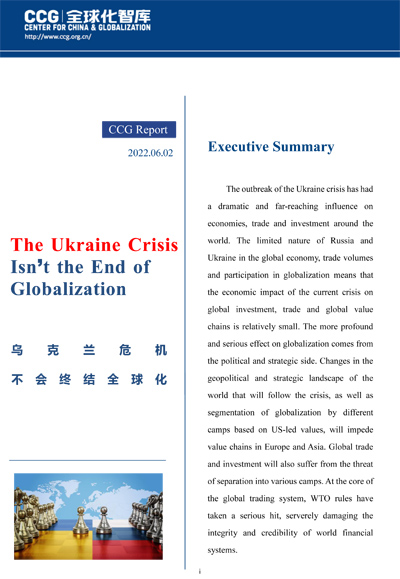
Executive Summary
The outbreak of the Ukraine crisis has had a dramatic and far-reaching influence on economies, trade and investment around the world. The limited nature of Russia and Ukraine in the global economy, trade volumes and participation in globalization means that the economic impact of the current crisis on global investment, trade and global value chains is relatively small. The more profound and serious effect on globalization comes from the political and strategic side. Changes in the geopolitical and strategic landscape of the world that will follow the crisis, as well as segmentation of globalization by different camps based on US-led values, will impede value chains in Europe and Asia. Global trade and investment will also suffer from the threat of separation into various camps. At the core of the global trading system, WTO rules have taken a serious hit, serverely damaging the integrity and credibility of world financial systems.
However, this crisis cannot change general trends in globalization. The basis of the international division of labor formed by modern mass production as well as three major trends in the degree of globalization, namely cross-border direct investment and the globalization of multinational corporations, the arrangement of three major global trade regions and the distribution of trade flows, and current global value chains, will remain stable.
The Ukraine crisis broke out on February 24, 2022, when Russia announced a “special military operation” in eastern Ukraine. Western countries, led by the US, took swift action and imposed several rounds of sanctions against Russia in an attempt to kick Russia out of the current global economic system. Russia supplies major commodities such as energy, minerals and food, as well as upstream raw materials for the chemical and semiconductor industries. Ukraine is an important global exporter of food and a key corridor for Russian gas shipments the EU. The crisis and harsh Western sanctions against Russia have quickly pushed up already high energy prices, which has led to disruptions in global supply chains and exacerbated persistently high inflation in the US and Europe.
In a letter to shareholders on March 24, Larry Fink, CEO of the global investment company BlackRock, wrote, “The Russian invasion of Ukraine has put an end to the globalization we have experienced over the last three decades.” Fink’s judgment quickly sparked a heated debate on “whether globalization is coming to an end” worldwide.
This report focuses on whether the Ukraine crisis will lead to the reversal and end of globalization. Since the definition of globalization varies in different contexts and the scope of each overlaps, the term “globalization” in this report will generally refer to economic globalization.
The report quantifies the dimensions of economic globalization, defining trade, investment, supply chains and value chains as dimensions of analysis, and evaluating the extent to which the process of economic globalization since the end of the Cold War has been affected by the Ukraine crisis. By assessing the degree to which these dimensions have been affected by the crisis, this CCG report provides a preliminary judgment on the direction of economic globalization and has come to the conclusion that the Ukraine crisis will not end globalization.
I. Seven dimensions:Evaluating the impact of the Ukraine crisis on globalization
(i) The impact on world economic growth
The negative impact of the Ukraine crisis has become almost unanimous recognized by authorities. In April 2022, the WTO (World Trade Organization) revised its previous forecast for global economic growth in 2022 from 4.1% to 2.8%. The World Bank lowered its forecast from 4.1% to 3.2%, and the IMF (International Monetary Fund) revised its forecast from 4.4% to 0.8%. All these three important international institutions cite the Ukraine crisis as the main factor influcing global economic growth.
However, the size of the Russian and Ukrainian economies shouldn’t be sufficient to enable the Russian-Ukrainian conflict to stagnate or reverse global economic growth. In 2020, the GDP of Ukraine accounted for only 0.0018% of the global economy, and Russia’s accounts for only 0.0017%. It is forecasted that total economic losses for Ukraine and Russia will be close to $800 billion, but this number does not even reach the lower boundary for losses in the global recession since 2000, which means that the direct losses of the two countries from the current crisis will have a lower on the world economy than the Covid-19 pandemic.
But the crisis itself will create spillover effects by disrupting the two countries’ ties to the international economic system. The IMF believes that the Russia-Ukraine conflict will lead to a downward revision of 143 economies’ growth forecasts this year, which account for 86% of the global economy.
(ii) Limited impact on global trade in the medium term
In terms of total trade, Ukraine’s exports accounted for 0.2% of world export trade in 2020, and Russia’s export trade accounted for about 3% of world trade in the same year. Measured as a single international trade region, the Commonwealth of Independent States (CIS), which includes Russia and Ukraine, has made up less than 3% of total goods trade with the world for many years. The impact of a single indicator that jeopardizes the world’s export and import trade is more limited.
After taking the Ukraine crisis into consideration, in April 2022 the IMF still forecasted that world trade volume in goods would still grow by 5.0% in 2022 and 4.4% in 2023. The WTO lowered its forecast for world trade volume from 4.7% to 3.0% in 2022 with an increase to 3.4% in 2023. As of now, there is no fundamental change in the projections of the major global governance bodies in maintaining positive trade growth in 2022 and 2023.
After taking the Ukraine crisis into consideration, in April 2022 the IMF still forecasted that world trade volume in goods would still grow by 5.0% in 2022 and 4.4% in 2023. The WTO lowered its forecast for world trade volume from 4.7% to 3.0% in 2022 with an increase to 3.4% in 2023. As of now, there is no fundamental change in the projections of the major global governance bodies in maintaining positive trade growth in 2022 and 2023.
It is imporant to note that trade between the various major economies continues to grow relatively quickly. For example, total trade growth between China and the United States exceeded 20% in 2021 and the total value of China’s exports and imports with the European Union increased by 27.5% in 2021 compared to the previous year. China alone accounts for 13.5% of total global trade. The relatively small share of Russia’s foreign trade is unlikely to trigger a trend decline in global trade. However, supply chain changes may push up the cost of import and export trade for some countries. In addition, as Russia and Ukraine are important suppliers of basic commodities including food, energy and fertilizers, the crisis has affected the upstream supply chain of the international energy market, which exacerbates supply and demand imbalances in international commo-dity markets and pushes up inflationary expectations in a large number of economies around the world.
(iii)Limited impact on international investment
According to World Investment Report 2021 released by the United Nations Conference on Trade and Development (UNCTAD), at the end of 2020, Russia and Ukraine accounted for 1.1% and 0.12% of the world’s total cross-border foreign direct investment (FDI) stock, respectively. FDI flows between Ukraine and Russia accounted for only 2% of global FDI flows in 2020. The impact of the Ukraine crisis on international investment is not big enough to cause a decline in global FDI.
However, the Ukraine crisis has changed the global investment landscape in two main ways. First, with the imposition of Western sanctions, there will be a significant withdrawl of investment from Russia in 2022, with the withdrawal of energy investments having a greater global impact and little impact in other areas. Second, capital originally designated for Russia’s commodity sectors, such as energy, will look for similar investment targets among other economies, mainly emerging markets in Asia.
UNCTAD warns that the Covid-19 pandemic, labor shortages, supply chain bottlenecks, energy prices and inflationary pressures will have a comprehensive effect on global investment, and the Ukraine crisis is only one variable. However, due to the irreplaceable position of these two countries in the commodity market within the short term, spillover effects from commodity price volatility may become an important risk to global investment in the future. Global FDI will need to be partially reallocated.
(iv) The impact on global aviation logistics
Logistics Performance Index 2018 compiled by the World Bank presents the logistics friendliness of countries through the logistics performance index (LPI). Ukraine ranked 69th in the LPI, while Russia fell to 85th place. Both countries rank poorly in terms of logistics friendliness.
In looking at air, sea and land transport as the three major sectors of global logistics, the Ukraine crisis will have the greatest impact on global air transport. Previously, a large number of long-haul civil aviation services in the northern hemisphere chose to fly through Russian airspace at higher latitudes to shorten routes in order to reduce costs. After the crisis broke out, many airlines were be forced to choose longer routes, resulting in higher fuel costs. According to the International Air Transport Association (IATA), the Ukraine crisis, along with the pandemic and shrinking demand in all major markets, are listed as three reasons for the decline in demand for cargo at airports. The European market was the hardest hit, with market demand down a whopping 19.7% year-over-year. Clearly, the irreplaceability of air routes in transporting high value-added products means the Ukraine crisis has indirectly pushed up air cargo prices, which will remain high and to some extent increase pressure on global supply chains.
In maritime transport, Russia’s geographic location has caused its main coastal ports to be relatively underdeveloped. At present, with the exception of Ukrainian grain exports, the impact of the crisis on global maritime routes is very notable. However, Russian and Ukrainian longshoremen account for 14.5% of the total number of global maritime employees and it remains to be seen if the crisis will result in a shortage of global maritime labor.
Land transport has mainly affected China-Europe Railway Express (CRE) freight that runs through countries in the Belt and Road Initiative. CRE service to Europe via Russia and Ukraine has been discontinued, while the other routes remain in normal operation. CRE freight volume accounts for 8% of the total trade between China and Europe, which can be partially replaced by sea or other land transportation. The overall impact on China-Europe trade has not been very serious.
(v) The significant impact of the Ukraine crisis on the world global inter-national energy supplies
The Russian Federation is the world’s largest exporter of natural gas and the second largest exporter of oil. In 2021, EU gas imports from Russia accounted for 45% of total gas imports and 40% of total consumption. In 2020, the EU crude oil import from Russia accounted for 29% of its total crude oil imports.
Restrictions on supply resulting from Western sanctions have aggravated shortages in crude oil and led to a sharp spike in oil prices and natural gas prices. According to the index for price volatility in energy markets recently unveiled by UNCTAD, crude oil and natural gas prices increased by 46% and 49% respectively after the crisis.
As a result of the Ukraine crisis, the EU has said this year it will import 70% less gas from Russia compared to last year, and the vast majority of member states will stop importing Russian crude oil and refined oil products by the end of 2022. The EU has since turned to the United States and Qatar to import natural gas, but with global gas production capacity approaching saturation, it will be difficult for the EU to find sufficient alternative sources in the short term. These problems will cause a supply mismatch, which will trigger a continuous rise in global energy prices and lead to a dramatic change in the global energy market landscape, which will face a period of intense adjustment.
(vi) The catastrophic impact on global food supplies
UNCTAD data shows that Russia and Ukraine account for 1/3 of the world’s grain exports, providing nearly 30% of the world’s wheat and barley. They also account for 53% of the world’s total sunflower oil exports. Among the world’s major wheat consumers, 50 countries import more than 30% of their wheat from Russia and Ukraine.
After the start of the crisis, Ukraine announced a ban on exports of a range of agricultural products until the end of 2022, while Russia also announced a ban on certain grain exports, which triggered a rise in international food prices. On April 8, the UN Food and Agriculture Organization (FAO) released its third consecutive Food Price Index (FFPI), which indicated that mild shortages already existed in global food market and food prices rose by an average of 40% in 2021. This year’s food prices are 34 percent higher than a year ago, the highest on record.
It is worth noting that Russia, the world’s top fertilizer exporter, has announced the suspension on fertilizer exports. Natural gas is an important raw material in fertilizer production. The energy sanctions imposed on Russia have also affected fertilizer production in some EU countries, which in turn has affected their agricultural production and exacerbated the rise in food prices. The impact of the Ukraine crisis on international food trade is truly global.
(vii) The impact on global value chains
1. Russia’s share in global and regional value chains
The Global Value Chain Development Report 2021 (“Report”), jointly compiled by the Asian Development Bank and other institutions shows that Russia has a higher rate of participation in trade and production than China, which means that Russia relies heavily on international markets and the Ukraine crisis will inevitably impact global energy value chains.
In the last decade, despite the significant growth of various regional free trade agreements (FTA) worldwide, Russia has only joined regional FTAs like the Eurasian Economic Union (EAEU) co-founded in 2015 with Belarus, Kazakhstan, Armenia, and Kyrgyzstan. In 2021 Russia’s trade with the other four EAEU countries accounted for only 5.8% of its total trade in goods, the remaining 94.2% remained outside the Union. The added value for the countries in the EAEU mainly lies outside the zone, mainly China and the EU. With the exception of Belarus, Russia’s main trading partners are non-EAEU members. Furthermore, Ukraine plays an even smaller role in global value chains and generally does not participate in regional FTAs, which means the Ukrainian crisis will not disrupt global value chains as a whole.
2. European-Asian value chains will be severely impeded
Sanctions put in place by the US and European countries on Russia will partially disrupt energy value chains between Russia and Europe, as well as some key raw material supply chains for the semiconductor and aerospace industries. This will result in Russian exports in energy and related products focusing more on Asia. The EAEU will focus more on intra-regional trade, weaken its role as a bridge between Asia and Europe. The connectivity and final integration of European and Asian will be difficult to achieve.
Nearly all multinational corporations (MNCs) implemented sanctions against Russia similar to those passed by Western nations, a demonstration capital following politics. While the goal of cross-border investment is the optimal allocation of global resources to achieve maximum returns at minimum cost, MNCs have also started to integrate risk factors such as geopolitical politics and national security more into their global layout. Most also adopt the value-based alignment to avoid the negative impact of sanctions when doing business in host countries.
II. Post-crisis changes in geopolitics and the division of globalization
This section will look at how geopolitical conflicts around the world caused by the Ukraine crisis and the changing geostrategic landscape in Europe will hinder and affect globalization.
(i) Geopolitical conflicts and changes in the strategic landscape in Europe
Since the outbreak of the Russia-Ukraine conflict, the US, Europe and NATO have taken an unprecedentedly tough stance on Russia. On the one hand, they try to manipulate global public opinion, while on the other hand supporting Ukraine politically and militarily. The West has taken the opportunity to impose unprecedentedly “devastating” sanctions on Russia.
Regardless outcome, Ukraine’s full-scale defection to the West is a fait accompli. Antagonism toward Russia among former Eastern Europe bloc countries has intensified and the EU as a whole will be in opposition to Russia. The US has also strengthened its dominance in Europe by reviving NATO and other institutions.
In Europe, Russia will face strong pressure from NATO and the EU. In addition to sereverely damaging the Russian economy, severe Western sanctions will also severely hinder Russia’s access to the world financial system and capital markets, as well as advanced Western technology and investment. Russia’s trade with the West will be greatly restricted. A radical regression in its participation in global supply and value chains emerges. The IMF predicts that under Western sanctions, by the end of 2022 the Russian economy return to 2010 levels. Russia’s foreign economic and geopolitical cooperation will shift more to Asia, especially to China, Southeast Asia and South Asia.
(ii) Political camps divide global trade, investment and finance
The US is a leader in value-based alignment. Its high-tech companies expand in markets that sharing its values and lie within the same political camp, while preventing them from investing in countries like Russia that do not, ultimately driving existing Western investment out of Russia. Meanwhile, other economies that need Western investment, technology and capital find it hard to not align. Globalization is in danger of being divided into two camps: a Western camp and a Russia/China camp.
Freezing Russian financial assets and foreign exchange reserves in the US and Europe, and excluding Russian companies from Western financing platforms means that sovereign state assets in the currently Western-dominated international financial system could be targeted at any time. The SWIFT system for international settlements could kick out non-Western members at any time, which makes the global financial system increasingly unsuited to globalized development. This would naturally give rise to alternative financial tools that would create disorder in globalization.
III. The Ukraine crisis will not change globalization as a general trend
(i) Cross-border direct investment and globalization of MNCs will remain unchanged
1. From plunging to surging: Global cross-border direct investment in 2020-2021
According to UNCTAD’s World Investment Report 2021, the Covid-19 pandemic, the largest post-war global public health crisis, global cross-border direct investment in 2020 plunged by 35% to its lowest level since 2005. Numbers in both developed and transitioning countries fell sharply by 58%, while developing countries only fell by 8%. Asia bucked the trend with an overall increase of 4%, which can be attributed to China’s 6% growth and Hong Kong SAR’s significant 61% growth, while other developing countries in Asia still showed negative growth.
On January 19, 2022, the latest edition of Global Investment Trend Monitor report, released by UNCTAD, showed that global FDI strongly rebounded in 2021, increasing by 77% to $1.65 trillion, surpassing pre-Covid levels. However, developed countries have not yet returned to pre-Covid levels with the EU performing extremely poorly. A surge in cross-border M&As caused funds flowing into the US in 2021 to exceed 2019 levels by 24% .
Most of the world’s cross-border direct investments in 2021 went to developing countries, with a 30% increase compared to the previous year. Asia’s cumulative growth of 25% reached $696 billion, more than Europe and the US combined. FDI in China reached $334 billion, showing that Asia, with China as its largest economy, occupies an irreplaceable and important position in the global supply chain.
2. Two major indicators of international division of labor still expanding, but significantly more slowly
There are two main signs that global cross-border investment reflects the state of the international division of labor (the basis of globalization). One is the change in the total stock of cross-border FDI; the other is the change in the proportion of cross-border operations in MNCs.
The world stock of cross-border FDI inflows grew 6.16 times in the first two decades of this century. However, first-decade growth rates of 169.7% slowed to 108.0% in the second with cross-border FDI never reaching the same level after peaking at $203 billion in 2015. 2019 was only 75.3% of 2015 levels, and 2021 levels were comparable to 2017 levels, with a gap of nearly $300 billion from the peak.
Developing countries have become the main growth point for investment inflows. Over the past 20 years, the share of developed countries fell from 78.3% to 69.4%, while the share of developing countries rose from 21.7% to 30.6%.
In 2020, the combined revenue of Fortune Global 500 companies fell by 5% from the previous year, equivalent to more than one-third of global GDP. The multinational index (the average of overseas assets, sales and employees as a share of total company-wide revenues) for the world’s 100 largest non-financial multinationals has declined slightly in recent years, but remains above 50%, indicating that multinationals remain dominated by overseas markets. However, the shares of overseas assets, sales and employees in the total number of companies in 2020 compared to 2018 have all declined slightly, indicating that their multinational operations are slowing down.
In the past 30 years, MNCs have distributed production based on the global division of labor system based on production factors and comparative advantages in individual economies. While the Ukraine crisis has led multinational companies to consider more geopolitical risks in their strategic layout, this logic has not changed fundamentally. For example, Boeing 787 production is spread over 66 countries and regions, and this distribution is rigid because each location only produces one component or system, which is highly specialized and difficult to replace.
Before the Ukraine crisis, regionalization in global supply chains had already been gradually increasing. The highest degree of regionalization (intra-regional trade in interme-diate goods as a share of trade in intermediate goods to the world) was in North America, Asia and the EU, respectively. However, the intra-regional division of labor remains immature and must integrate into the global division of labor. Currently, developing countries are the main players in downstream manufacturing and supply chains are incomplete with the division of labor only among developed countries. The EU, which has the highest degree of economic integration, is unable to build an effective and differentiated division of labor in the production process among its member countries, and cannot form a full industrial chain, which is bound to divide labor and trade with developing countries to a large extent. The highest degree of regionali-zation is in North America and is due to the fact that Mexico is a major downstream manufac-turing link for the US and Canada. Asia’s regionalization index is only slightly lower than that of North America, but considerably higher than that of the EU, because Asia has both developed and developing countries.
(ii) Asia, Europe and North America as hubs of world trade and the stability of trade flow landscapes
The top ten rankings for total trade in the WTO 2020’s ranking of global trade in goods were in East Asia, North America and Western Europe. Ukraine and Russia ranked relatively low and are clearly not at the center of global trade in goods. The WTO’s goods trade statistics divide the world into seven segments, and from 2003 to 2020, close to 90% of global goods trade were in North America, Europe and Asia (including Oceania), a distribution that remains almost unchanged.
The top ten rankings for total trade in the WTO 2020’s ranking of global trade in goods were in East Asia, North America and Western Europe. Ukraine and Russia ranked relatively low and are clearly not at the center of global trade in goods. The WTO’s goods trade statistics divide the world into seven segments, and from 2003 to 2020, close to 90% of global goods trade were in North America, Europe and Asia (including Oceania), a distribution that remains almost unchanged.
The pattern of trade flows between these major segments is an important indicator. The World Bank also classifies global goods trade into seven segments, but they differ slightly geographically from the WTO definition. The broad pattern of trade flows among these seven segments, however, has not changed over the past two decades. The world’s major trading powers and major trade segments are in Asia, Europe and North America, with the most striking feature being the rise of China. These very clear and stable global supply chains constitute the material basis of globalization and objectively show that the laws of globalization will not be changed by the Ukrainian crisis.
(iii) Globalization has slowed but global value chains remain stable
The Global Value Chain Development Report 2021 jointly compiled by the Asian Development Bank and other institutions takes the value added by countries in cross-border trade and cross-border production as the rate of participation in globalization. The report showed that the period from 1995 to 2008 was a period of hyper-globalization. After the global financial crisis in 2008-2009, the annual growth rate of world trade fell sharply to 3.7%, while the period from 2010 to 2020 can be called slowbalization. During this period, the internationalization of the division of produc-tion declined, with the participation rate dropping from 14.2% to 12.1%, but the degree of trade internationalization remained basically stable, only dropping from 46.1% to 44.4%. The volume of indirect exports, an indicator of trade internationalization, reached a record $13.6 trillion in 2018, with no decline in the growth rate and even a slight increase, indicating that the international division of labor as a major trend has not fundamentally changed.
The Report uses the Regional Concentra-tion Index (RCI) to measure the degree of concentration of foreign trade of each member country of an FTA within the region, with a value greater than 1 indicating intra-regional predominance. The higher the index, the higher the concentration of intra-regional trade. The highest concentration was in the US-Mexico-Canada trade agreement, followed by the ASEAN-China-Japan-ROK FTA, and then the EU plus UK agreement, but with very little difference between them. All three of these RTAs have a regional concentration of over 1.5.
This analysis shows that global value chains are centered around China, Europe and the United States as hubs with both patterns and dynamics remaining stable.
By analyzing cross-border direct invest-ment, world trade patterns and global value chains for these three regions, we can draw a preliminary conclusion that the international division of labor on which globalization is based, as well as cross-border direct investment and international trade and global value chain will remain stable and generally unchanged. As an important destina-tion for global cross-border direct investment, APAC will remain the most important segment in global trade and an important hub for global value chains and will be an anchor for economic globalization. As long as this role is not weakened, the overall trend of globalization will remain solid.
(iv) Political division cannot change globalization
Western countries, led by the United States, are increasingly emphasizing the construction of so-called “globalization camps” according to values, excluding countries that do not conform to their ideals. Globalization respects the law of productivity and it is difficult to achieve this by taking political sides and dividing the the world into camps defined by common values. Europe accounts for 38.2% of total world trade, more than 60% of which is internal trade, while the main destination of foreign trade is APAC. Data from the UN shows that in 2020 the Asia-Pacific region accounted for 41.8% of global exports and 38.2% of imports in trade in goods.
The Asia-Pacific region, as the most dynamic region of global economic development, is trying hard to avoid taking sides based on political systems or values. The exclusion of Russia from international trade by Western countries because of the Ukrainian crisis will be difficult to achieve and it will be very difficult to change globalization based on the laws of productivity by dividing countries into political camps.
On March 17, the US House of Represent-atives passed a bill by a majority vote in favor of recommending that the United States promote the suspension of Russia’s WTO membership and the suspension of Belarus’ application for WTO membership. Although the relevant provisions of this bill are not binding, it shows that the WTO is not immune to the impact of the Ukraine crisis.
The WTO is composed of 164 economies, with developed countries accounting for only a small fraction of these members. WTO rules are based on the principle of unanimous adoption. Therefore, while the United States may have led the establishment of the world trade system, it cannot easily make changes to the rules that govern it. More importantly, developed countries like the United States, Europe, Britain, Japan and Canada cannot form a complete world trade system as trade among them reflects a horizontal division of labor not vertical. Therefore, developing countries must be involved in order to ensure an effective vertical division of labor. This demonstrates the need for developed and developing countries to develop global trade rules together, rather than only by a few developed countries.
“Extreme sanctions” placed on Russi by Western countries lack support from the developed world. In early May when a ban on Russian oil was enacted, the European Union approved exceptions for Hungary and Slovakia, which are heavily dependent on Russian oil, allowing them to continue importing Russian oil for a period of time.
The Ukraine crisis has also caused the euro to depreciate and its share as a major global currencies has fallen to a 10-year low. The European economy has also suffered. It will be difficult to completely break energy supply chains between Russian and Europe and there is bound to be a hedge against sanctions, resulting in compromises on the implementation of EU sanctions against Russia. Political actions that go against the laws of economics are inevitably punished by the laws of economics.
(v) Historical and theoretical proofs
Historically, the history of globalization is an inevitable product of the development of productive forces that brought about modern mass production, and the division of labor and exchange that transcended national borders. In 1848 Karl Marx and Friedrich Engels wrote in Manifesto of the Communist Party that “Modern industry has established the world market, for which the discovery of America paved the way. This market has given an immense development to commerce, to navigation, to communication by land.”
The three industrial revolutions greatly liberated productivity and further interna-tionalized production and distribution. In the course of the first and second industrial revolutions, the industrialized countries, led by Britain, promoted the rapid development of international trade. Industrialized countries such as the United States, Germany, Britain, and France became producers of industrial products, while North and South America, the Caribbean, India, and Africa became major exporters of agricultural products and raw materials. Along with the development of trade, the export of capital also increased. 1880-1913 was called the “Golden Age” of international finance.
Before the imminent end of World War II, the Bretton Woods system led by the United States was formulated to establish GATT, and after the war, there were successive rounds of tariff reductions and continuous reduction of non-tariff barriers until the birth of the World Trade Organization in 1995. This free trade institutional arrangement has greatly facilitated international trade and investment, thus giving a strong impetus to economic growth and employment.
During this period, the “Third Industrial Revolution” or “Information Revolution” has greatly increased productivity and the widespread use of the Internet has facilitated the global distribution and circulation of design, R&D, and supply chains, greatly promoting globalization. The fourth industrial revolution is an era of artificial intelligence, which will further globalize design, production, exchange and consumption, and thus intensify market competition, thus forcing physical production to implement a broader global layout.
Marxist political economy holds that the superstructure of policies, strategies and institutions cannot determine the economic base, but rather that the economic base determines the superstructure. However, the superstructure is not the law of globalized economy and superstructure behavior that violates economic laws can cause great damage, distortion and delay to the economic base. It cannot change the latter, rather it must ultimately obey it.
The economic laws of globalization often force governments or the international community to make policy changes to make them obey this economic law. For example, the two world wars completely prevented international trade. That was a classic example of the superstructure impeding the development of the economic base. But while the wars may have reshaped globalization, post-war globalization remained in an unstoppable trend. The current landscape is being changed, and as Dr. Huiyao Wang, President of the Center for China and Globalization, stated in a recent article, “globalization isn’t dead, it’s just not American anymore”, “We have entered a phase of global integration driven by multiple new forces, more diverse and controlled than ever before.”
At the same time, we must also recognize that there are some essential problems with economic globalization.
First, the current setbacks and partial reversal of economic globalization is a reflec-tion of the cyclical sway of the world order dominated by the Washington Consensus. Second, the current system of economic globalization is not a system of equality, which means that globalization is not always in the interest of the majority of participants and is bound to encounter strong opposition. Finally, economic globalization of the past has changed greaterly in terms of industry patterns, investment and trade. New institutional designs are needed to address the new problems created by past strategies of globalization.
IV. Conclusions and Policy Recommendations
(i) General conclusions
1. The Ukraine crisis has brought sudden disruptions to the world economy and supply chains, spreading to most parts of the world and causing major shocks to globalization.
2. This shock has lowered economic and trade growth expectations globally and regionally. It has disrupted energy, food and industrial supply chains. However, Russia and Ukraine do not have a dominant role in global cross-border direct investment, global trade and global value chains, so the Ukraine crisis itself has had relatively little impact on economic globalization.
3. The main shocks to globalization currently come in the form of political impediments and disruptions to the economy in the form of changing geopolitical landscape in Europe post-crisis and the rise of geopolitical confrontation. The United States and other Western countries made value-based lines in the sand in an attempt to construct a politically dominated and segmented globalization to serve their geopolitical purposes.
4. The impact of such political and strategic behavior will have a significant negative impact on the globalization process, but cannot change the objective laws of globalization. The pattern of globalization with the center of gravity in the three blocks of East Asia Pacific, Europe and North America is still very solid, and the Ukraine crisis will not put an end to globalization.
5. As globalization is challenged by more uncertainties, China needs to remain confident that the trend of globalization will continue to deepen and develop; and to firmly promote all-around economic and trade cooperation with all countries and regions.
(ii) Policy recommendations
1. Adhere to an objective and impartial position on the Ukraine crisis, and insist on promoting talks and peace. Strive to do the work of both Russia and Ukraine, and take the initiative to consult widely in the international community to do our best to end the war as early as possible and achieve balanced and just security arrangements for both Europe and Russia. Strive to play a major role in the peaceful resolution of the Ukrainian crisis.
2. Firmly oppose any unilateral sanctions that have no basis in international law. Continue to maintain normal trade relations with Russia and Ukraine while also communicating well with the world.
3. Uphold multilateralism and globaliza-tion and strive for the largest possible majority in various global governance institutions and platforms. Promote existing global governance mechanisms and make them play a greater role in responding to the pandemic and geopolitical crisis.
4. Actively promote negotiations on and the implementation of various regional and bilateral FTAs. China will speed up the pace of negotiations to join the CPTPP. The Belt and Road Initiative should also be promoted to make continuous progress and achieve more tangible results.
5. Strive to promote China’s all-around trade and investment cooperation with multiple economies and further consolidate and stabilize global supply chains with a particular focus on the EU to develop and enhance supply chain cooperation with EU countries and strive for cooperation with the EU in the multilateral arena.
6. Unswervingly adhere to deepening re-forms and expanding openness, in particular, encouraging multinational companies in high-tech fields to invest and set up businesses in China. Expand the opening of the financial sector and integrate more deeply into the world capital market. Listen carefully to the reasonable demands of foreign-funded enter-prises, further create a business environ-ment of fair competition and equal treatment, and break the US plan to isolate China.
7. Calmly handle relations with the US and resolutely oppose misguided Cold War thinking, siege and suppression and isolation of supply chains against China. China will also strive to strengthen dialogue with the US, manage differences and maintain the general stability of US-China relations. Efforts will be made to develop local, business and people-to-people exchanges and cooperation with the United States so that China-US trade will remain stable and grow.
8. Promote inclusive globalization, explo-re cooperation between the Belt and Road and the G7 Global Infrastructure Development Initiative, actively consolidate the RCEP, promote the process of joining the CPTPP, and explore coexistence and docking with the IPEF while the US is promoting the construction of the Indo-Pacific Economic Framework (IPEF) in the Asia-Pacific region, so as to maximize the space for China’s economic globalization.
Research Group
Topics and Consulting: Wang Huiyao
Topics and Planning: Miao Lu
Overall Composition: He Weiwen
Writing and Research: Wu Mengqi Cai Jing Xu Haiyu Tang Wanying
